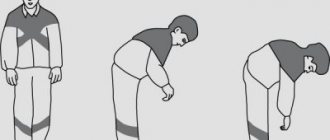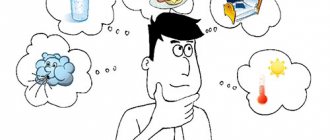March 31, 2022
Every person always tries to express himself , but sometimes this expression does not satisfy the need. This happens when the method of expression does not accurately convey what you wanted to say to others. The inability to express oneself often leads to inner feelings and conflicts.
Self-expression is the need to show yourself to the world around you. It manifests itself from the first days of a child’s life; with his cry, he informs his parents about his feelings and needs.
Adults do this in different ways. People draw and sing, dance and write poetry, and experiment with their appearance. All this helps to unlock your potential and develop your abilities.
Reasons for lack of self-expression:
Fear of self-expression begins in childhood . In those families where there is strict control over emotions, fear of expressing oneself appears. Usually parents themselves have a fear of expressing themselves, they themselves are offended, irritated, and easily withdraw into themselves. Children are forbidden to release aggression; as a result, the child learns to restrain and suppress his self-expression, and aggressive emotions remain within himself. A child is considered good if he is emotionally restrained and avoids conflicts. All this leads to the accumulation of negative energy. Self-expression in this family becomes impossible.
In such families, relatives keep their experiences secret from others, that is, “loneliness together.”
Visual methods and techniques
The main principle of children's thinking is the principle of clarity. Therefore, in kindergarten classes it is necessary to use visual methods and techniques that will ensure the high efficiency of the educational process.
Observation
Observation is a systematic and purposeful perception by children of objects or environmental phenomena. For this process to be effective, the teacher must set a goal for contemplation for the children. Several options are possible.
1. Recognize, determine characteristics.
For example:
- in classes on the surrounding world while studying the topic “Flowers”, you can be asked to look at various plants and name only the flowers;
- in mathematics classes, when considering topics of comparing objects and establishing relationships between them, the task is to determine which objects are more and which are fewer; which tree is taller, which is lower, which fruit is shaped like a circle, etc.;
- in classes on speech development when studying the topic “Sound,” the teacher may suggest observing his pronunciation (how the lips are positioned, whether something prevents him from pronouncing the sound in a drawn-out manner).
2. Determine the nature of the changes or transformation of the object.
For example:
- in manual labor classes while playing with sand - determine how sand changes if it is wet;
- in classes on the surrounding world when studying seasonal changes in plants - observe what happened to the trees in the fall;
- in mathematics classes when studying the number 3 - establish what will change if you add one more to two subjects.
3. Establish the state of the object based on individual characteristics.
For example:
- in classes on the surrounding world when studying the topic “Parts of the day” - determine by the state of the sky and the position of the sun which part of the day has arrived;
- in classes on the surrounding world when studying the topic “Animals” - determine who it is by the type of paws (tail or ears).
Depending on the amount of time spent, observations can be long-term or short-term.
Demonstration
A demonstration is a visual display of an object. No verbal explanation in kindergarten classes will be effective if it is not accompanied by the demonstration of various visual aids. These include:
- objects, natural objects;
- subject or didactic pictures;
- book illustrations;
- reproductions;
- layouts.
The demonstration method covers the following teaching techniques:
- Demonstration of objects. Often such methodological techniques are used in kindergarten during art classes. For example, before asking children to draw an apple, they immediately show it to the children and ask them to take a good look and describe its shape, size, and color.
- Sample demonstration. For example, children are shown a sample of the application that they will perform or a sample of writing elements of letters, etc.
- Demonstration of how to perform actions. It is most often used in manual labor classes (how to roll out a “sausage” or make a ball out of plasticine, cut out a strip, glue a circle, etc.) and in physical education classes (how to bend over, jump, etc.).
- Demonstration of illustrations and reproductions. This technique is used when there is no possibility of direct perception of the object. For example, when studying the colors of the rainbow, if it is not in the sky at that time, children can be shown a picture in a book.
Observation and demonstration methods are most fully used during excursions and daily walks in the fresh air. They ensure the development of such a cognitive process as perception, the formation of visual-figurative and visual-effective thinking.
Great importance in the application of visual methods is given to the use of technical teaching aids (TSO) or a computer. This is becoming increasingly popular in the educational field and is used when there is a need to demonstrate a dynamic object or some process. Using TCO and a computer, they represent:
- filmstrips;
- slides;
- videos;
- computer programs.
For example, during a safety lesson, you could show a video about the rules for crossing the road. There are also now a large number of educational video games and programs, various cartoons with educational content, which are recommended for use in kindergarten classes.
Functions of self-expression:
- Positive emotions. Good mood in any situation.
- Helps get rid of negative emotions, psychological fatigue, anxiety and excessive tension.
- Allows you to better understand yourself: your potential, abilities, desires and needs, character and personal qualities.
- Increases self-confidence.
- Changes your social circle, searches for new acquaintances.
You can express yourself in different ways. And you don’t have to do this through creativity, although this is one of the most popular and effective ways of personal expression.
What is self-realization
Self-realization is actions to develop natural abilities. It doesn't matter whether they are helpful or antisocial.
Need for self-realization
The need for self-realization is understood as an individual’s desire to find a place in society, reveal personal qualities, apply knowledge and skills, and implement plans. He wants to be better than others, to receive satisfaction from what he has achieved. The need for self-realization is the strongest that a person has.
The basis of self-realization is recognition and self-affirmation. It is important for a person to show everything he can do and receive approval for it. He needs feedback from the people he encounters.
Satisfaction of the need for self-realization can be assessed by achievements. A good example is a doctor. His qualifications are proven by already healthy patients. It is not the support of colleagues that is considered important, but the assessment of those who received help.
If a person is able to develop his abilities and find the right application for them, society will recognize him as an accomplished person.
Low-level needs
Human desires have a strict hierarchy. It is based on lower-level needs. And until they are fully or partially satisfied, it will not be possible to move to a higher level.
At the lowest level is the satisfaction of physiological needs: hunger, thirst, sexual desire, finding shelter. A person needs to feel safe, have the right amount of strength, health and other important resources. At this level, people create a family, try to predict the future, make plans and try to stick to them.
Social needs also belong to the lowest level. When they are satisfied, a feeling of belonging to society or belonging to a separate group of people arises. Then comes the desire to gain respect, recognition, and to assert oneself among the class whose opinion is important to the individual.
If the needs that arose at a lower level were satisfied at least partially, desires of a higher, spiritual level arise. These include self-realization.
Higher level needs
To satisfy them you need to develop. Development is possible only in a stable situation. If it changes dramatically, then the needs undergo changes. An employee who is at risk of losing his job stops worrying about social rewards in the form of respect or appreciation from management. It becomes less important for him to reveal his own capabilities in activities. He cares about maintaining his job. It can also switch to physiological needs.
If the employee does not see a threat, he is actively involved in the activity, using all his abilities and knowledge.
A person cannot feel his needs are fully satisfied. One desire gives way to another. Since the basis is the needs of the lower level, they must be satisfied constantly.
Conditions for self-realization
The process of satisfying the need for self-realization can only be launched if there are a number of necessary factors influencing it. The upbringing and culture of a person are important. A strong influence comes from society or a separate social group in which the individual is located. Under the influence that a child experiences, important character traits are formed, life principles, culture of behavior and motivation are highlighted.
Whether a person will be able to achieve self-realization depends on what stereotypes dominate in society and what traditions it adheres to. For example, gender stereotypes are a big obstacle to women realizing their potential.
Another aspect that influences the need for self-realization is personal characteristics. Achieving goals requires responsibility and determination. Flexible thinking and an adequate perception of reality will not hurt.
Innate qualities and inclinations have the same meaning as acquired ones. These include self-confidence, initiative, energy, and hard work.
Possibility of self-realization
The need for self-realization and self-expression can be satisfied in several areas at once.
For example, success in career growth is often accompanied by interesting hobbies or strong family relationships. In any activity, you need to set goals and draw up a strategy. It comes in 3 types:
- The first type is a strategy for life success. Its basis is the desire to create comfortable living conditions.
- The second type is a success strategy, which is accompanied by a desire to move up the career ladder.
- The third type is a strategy of self-expression, which is associated with the need to develop one’s creativity and apply it in certain types of activities.
Everyone has different opportunities to satisfy the need for self-realization. Much is determined by the environment. For example, a person living in a period of crisis is struggling for existence, so he chooses the first type of strategy. In a society where a market economy is established, people choose the second type.
The process of personal self-realization
The success of self-expression largely ensures self-development. The need for self-realization is inseparable from the spiritual and practical process. Thus, the teacher must be in continuous moral development, which ensures constant improvement of his skills. Self-development presupposes a change in the individual, in which the existing “I” strives for the perfect “I”.
To do this, people should set goals, listen to desires, and evaluate their actions from the point of view of others. If you neglect the interests of society and do not try to give actions a social orientation, the individual will experience a destructive influence.
In the course of satisfying the need for self-realization, a person may find himself at different levels:
- Aggressive rejection of the type of activity that she carries out. The individual does not like what he has to do, but he is forced to do it.
- Desire to avoid work. With this approach, people choose a different profession.
- Passive perception. The work is performed according to a template or model.
- The desire to improve some elements of the work.
- Desire to make the most of skills and abilities. This level is often called creative or inventive.
There are other classifications. According to it, a person is at a low or average level of satisfaction of the need for self-realization. In the first case, he passively carries out the proposed work, in the second, he tries to prove himself as an individual. Intermediate level and level involves personal growth. With a high level of energy, a person considers work to be the meaning of life.
Ways to satisfy the need for self-realization
The need for self-realization inherent in nature forces the individual to look for the most suitable ways to satisfy it. You can understand yourself if you are in continuous interaction with others.
It is necessary to strive for self-awareness, discovering one’s own potential, identifying strengths and weaknesses, trying to strengthen the latter. All this will lead to the acceptance of personality, its full disclosure and development.
The choice of profession should be influenced by personal views. Society's opinion is of no use here. Although people often engage in work that brings more income, it does not provide spiritual satisfaction.
You can satisfy the need for self-realization if you set goals that are determined by your inner desire to do what you like. If an individual understands that any barriers and obstacles in the process of his work can be overcome, he is close to realizing himself as an individual. Mistakes are an irreplaceable part of experience; they contribute to growth.
Self-realization goals
At each age period, an individual can set different goals for himself on the way to satisfying the need for self-realization. Thus, in childhood, he reveals his mental and spiritual abilities, searches for himself, and learns to communicate with others. In adolescence, one has to choose a field of activity, development continues, and a person tries to arrange his personal life.
The period of maturity is characterized by self-affirmation in the sphere of activity and relationships. However, there are processes that continue throughout life.
Satisfaction of the need for self-realization is necessary in order to receive joy from development and related changes. Self-expression is the path to happiness. Ignoring it will deprive you of a happy life and positive emotions.
The problem of self-realization
There are a number of problems that prevent the satisfaction of the need for self-realization. The first is the discrepancy between desires and reality. For example, a young man chooses a job with a high salary rather than one that he likes.
Another problem is that often people do not listen to their own desires and do not seek to analyze their feelings. They avoid the effort required for self-development.
Stereotypes also negatively affect the need for self-realization. This also includes difficult economic conditions. They prevent you from reaching a higher level of desire satisfaction.
Types of self-expression:
- Creative. It allows you not to limit yourself, to realize your creativity, and to develop your abilities. This includes writing poetry, stories, drawing, photography, dancing, vocals, and embroidery. Don't suppress your potential.
- Emotional. Feelings are the basis of emotional self-expression. Don't hold them back, especially if they come from the heart. If you are overwhelmed with emotions, show them. Don’t look at what others think of you, don’t hide behind masks.
- Through appearance. It is used more often by women and girls. Appearance is the character of a person from the outside. Tattoos and piercings are a way to show off among young people.
- In tastes. These are a person’s preferences in different areas of life. In books, music, literature, cinema. Having his own taste, a person recognizes the tastes of the people around him.
Satisfying the need for self-realization in the profession
Personal expression plays an important role today. High demands are placed on a person for two reasons:
- Competition in the labor market.
- Difficult life circumstances.
Satisfaction of the need for self-realization is expressed externally and internally. External manifestation implies achievements, for example, receiving a promotion, an increase in wages, respect from colleagues. Internal self-realization is the development of useful qualities, gaining knowledge and improving skills.
This type of self-realization is characterized by continuity, creativity, setting and achieving goals. Here you can add the disclosure of personal potential, recognition from people engaged in a similar type of activity and other things.
Self-realization in the profession is strongly influenced by personal traits, for example, flexibility of thinking and behavior, ability to organize, communication skills, and the ability to work in a team.
When there is no self-expression:
Many people, for whatever reason, avoid expressing themselves. Their individuality is not known to others.
The most common barriers to open self-expression are fear and shame .
A person is afraid to open up (even a small part of himself), thinking that they will turn away from him. And he will be left alone, having lost something very important to him. If this fear of rejection paralyzes a person, the process of self-expression is inhibited. When these feelings are experienced frequently, the feeling appears that a person is living in vain. The result is low mood, laziness, apathy, depression.
With his boss he is polite and competent, with colleagues he is nice and friendly, in company he is inconspicuous and quiet.
Dresses neatly and discreetly, speaks correctly.
His inner world is wide, diverse with various feelings and desires. But he hides them from others.
Fears prevent you from showing this to the world: hearing a negative assessment, not meeting expectations, fear of remaining misunderstood. This indicates a lack of internal freedom, emotional constriction and the presence of complexes.
Definition
What is self-expression? Self-expression in psychology is the transfer of internal states, experiences, and emotions to the outside world. This is the external manifestation of everything that happens inside a person. For some people this process occurs consciously, while others do it unconsciously.
Generally speaking, self-expression is a change in reality and sometimes even in public opinion. And according to psychologists, this is also an opportunity to conduct a psychological analysis and study a person’s personality and the processes occurring within it.
Self-expression is rightfully considered one of the factors provoking the development of society. Humanity will develop only if there is contact or a clash of views, opinions, skills and abilities that differ from each other.
All people have different ways of expressing themselves. The reason for this is the influence of various external and internal or congenital factors. How original a person will be in the presentation of his inner world depends on them. The more freedom, self-confidence, and courage a person shows, the more unique and extraordinary a person he is considered to be. If patterns and stereotypes take the place of these qualities, you can’t count on originality and a creative approach to solving problems.
Need for self-expression
Visual representation of the inner world in the external environment is as important a need as survival. According to scientists, after a person satisfies the basic needs of food, clothing and shelter, it is time for self-expression. The process begins with learning about yourself and the world around you. As soon as they become clear, the need for self-realization arises. In simple words, self-expression is the desire to declare your existence to the world, to feel part of it, to begin to interact with it.
Interestingly, for many people, having the opportunity to express themselves is much more important than satisfying physical needs. For her sake, they are ready to go hungry, be left without a livelihood, or expose themselves to mortal danger. Such people will never agree with routine, boring, gray life. The opportunity to create for them is life itself.
The desire to realize ourselves, to present our inner world to others, is explained by the desire to reveal the potential within us. The same upbringing, instilling the same rules of behavior, the same standards of education at school make a person statistically average, the same as everyone else. This state of affairs deprives him of the opportunity to present himself, which is why he often begins to rebel and go against society. Only some do this in creativity, while others do it with the help of shocking and sometimes shocking antics.
In some cases, the need for self-expression decreases. This happens as a result of some kind of psychological trauma, for example, when a person was mocked, his creativity was ridiculed, or he was completely turned away.
How to help yourself, where to start:
- Leisure. Start relaxing physically (skiing, swimming, running, walking)
- Healthy sleep. Get enough sleep. Go to bed and wake up on time.
- One on one time. Give yourself time for hobbies.
- Recharging with gratitude. Before going to bed, remember 10 positive moments of the past day.
- Deferred compensation. Remember that the reaction to your expenses will not be immediate.
- Set yourself goals. Start with the smallest one. Confirm your wishes.
- Learn to visualize your goal.
- Motivate yourself. Motive is a psychological stimulus that encourages a person to act. For productive activities and achieving your goals, you can use ready-made motivation methods proposed by psychologists.
If something resonated with you while reading the text and it seems to you that the situation and symptoms described in the article are similar to your case, and you would like to solve this problem, you can call me first at + 7 (926) 169-36 -63 to talk about your problem that you want to solve.
The duration of the telephone consultation is 20 minutes (free of charge) , during which time I must decide whether I can help you within the framework of psychoanalytic counseling. If it’s easier for you to write a letter, you can do this by clicking on the link and sign up for a consultation. I ask you to describe your situation in as much detail as possible - the size of the letter is unlimited, I will definitely read your letter and respond.
I am always near.
Consider the theory of needs
There are several theories of needs.
Maslow's theory of hierarchical needs
Maslow assumed that every need is satisfied to some extent. He suggested this arrangement:
- physiological - 80-85%;
- safety and feeling of security - 70-75%;
- love and sense of belonging - 45-55%;
- self-esteem - 40-45%;
- self-realization - 10%.
The scheme is conditional and changes with an individual approach. Thus, there are people for whom the need for self-realization and self-esteem is more valuable than the feeling of love.
Maslow argued that people's actions are not always driven by economic interests, but that their actions are often motivated by needs that cannot be satisfied by money.
Alderfer's theory of work motivation
Alderfer highlights the need for self-actualization, the need for social connections, and the desire for growth. According to his ideas, the less an individual’s needs of existence are satisfied, the more strongly they manifest themselves. Applying these principles, Alderfer proposed to motivate workers. When meeting social needs, growth needs should be supported. If they are weakly expressed, it is worth doing the opposite.
Douglas McGregor's Theory of Motivation
McGregor identified 2 approaches to management, conventionally calling them “Theory X” and “Theory Y”. The first leadership style involves an authoritarian leader and strict control over the work of employees. The second approach is based on democracy, a number of powers are transferred to employees, work is underway to improve relationships in the team, and the motivation of people and their characteristics are taken into account.
Studying the personality of each person will help you choose an approach. This is the only way to satisfy the need for self-realization of all employees.
Frederick Herzberg's two factor theory
According to Herzberg's theory, employee motivation is influenced by the hygiene factor or a set of conditions under which the employee does not receive satisfaction. This is often due to company policy, relationships with management, working conditions and pay.
Another factor was called "motivator". Thanks to this approach, employees’ motivation to work increases, and they receive satisfaction of the need for self-realization. This occurs due to the possibility of promotion, personal growth, recognition from colleagues and management, and good pay.
The theory of motivation by L. Porter - E. Lawler
The Porter-Lawler model can be described as follows: in order to get results at work and rewards for them, you need to make an effort. The latter are determined by abilities, knowledge, experience, and level of qualifications. The higher the payment, the more effort put in. A person’s awareness of his role in the work process is also important.
Scientists have come to the conclusion that productive work will satisfy the need for self-realization. Previously, it was believed that the result depended on whether the person was initially satisfied. Porter and Lawler's theory has helped in the study of human motivation.
McClelland's theory of acquired needs
McClelland emphasized the needs of achievement, participation and desire in gaining power. The combination of these desires determines the employee's motivation. If you know what motivates an employee, you can use him more effectively by offering tasks the solution to which will suit him. This will improve your workflow. Employees will have the opportunity to satisfy their need for self-realization.
Mechanisms of self-regulation
In almost all methods of self-regulation, two main psychophysiological mechanisms are used: a decrease in the level of wakefulness of the brain to a certain extent and maximum concentration of attention on the task being solved.
Wakefulness can be active or passive. Active wakefulness occurs when an individual is reading a book or watching a movie. Passive wakefulness manifests itself in cases when the subject lies down, closes his eyes, relaxes all his muscles, and tries not to think specifically about anything. This state is the first stage on the path to falling asleep. The next stage, a lower level of wakefulness, will be drowsiness, i.e. superficial drowsiness. Next, the subject goes down some steps into a dark room and falls asleep, falling into a deep sleep.
Based on the results of the research, it was revealed that the human brain, which is in states of drowsiness and passive wakefulness, acquires one rather important property - it becomes maximally receptive to words, to the mental images and ideas interconnected with them. It follows that in order for purposeful words and their corresponding mental images and ideas to have a pronounced effect on individuals, they must be passed through the brain, which is in a reduced state of wakefulness - a state that resembles dozing
This is the main essence of the first mechanism, which is used in methods of mental self-regulation
It follows that in order for targeted words and their corresponding mental images and ideas to have a pronounced effect on individuals, they must be passed through the brain, which is in a reduced state of wakefulness - a state that resembles drowsiness. This is the main essence of the first mechanism, which is used in methods of mental self-regulation.
The second important mechanism of self-regulation is maximum concentration of attention on the task at hand.
The more focused the attention, the higher the success of the activity to which the subject is paying attention at the moment. Man is designed in such a way that he is unable to simultaneously focus attention on several phenomena or objects.
For example, it is impossible to listen to the radio and read a book at the same time. Attention may be focused either on the radio or on the book. And when attention is directed to the book, a person does not hear the radio, and vice versa. Most often, when trying to do two things at the same time, the quality of doing two things suffers. Therefore, there is no point in engaging in two activities at the same time. However, very few people know how to completely disconnect from interfering factors. In order to learn to fully control your own attention, you should train every day several times a day, trying to hold your attention on something for a couple of minutes. During such training, you should never strain yourself. You need to learn to maintain concentrated attention without straining yourself either physically or psychologically.
Among the fundamental mechanisms of the motivational level of personal self-regulation, which are most effective in critical situations, there are semantic connection and reflection.
The mechanism of self-regulation, in which the formation of new meaning occurs through its emotional saturation through the connection of neutral content with the semantic and motivational spheres of the personality, is called semantic binding.
Reflection allows an individual to look at himself from a different perspective, transform his attitude towards something, rearrange his world, and adapt to a constantly changing reality. Reflection is a way of personal self-development, in contrast to unconscious forms of self-regulation (psychological defense).
So, self-regulation is a systemic process that can provide transformation and plasticity of an individual’s life activity at any stage that is adequate to the circumstances. This process is characterized by the purposefulness of the subject’s activity, which is realized through the interaction of various phenomena, processes and levels of the psyche. Self-regulatory processes determine the integrity and systemic integration of the psyche.
We are on Telegram! Subscribe and be the first to know about new publications!
History of the study
To study history and understand the essence of “motive”, you need to consider substantive theories regarding this phenomenon. They analyze all the factors that influence the construction and formation of motivation. The main theory is the hierarchy of needs, which was compiled by Abraham Maslow. Key points:
- Needs are divided into groups for which there is a certain hierarchy.
- High needs are easier to satisfy.
- After one need is satisfied, another takes its place.
Initially, a person begins to satisfy desires that are at the lowest level of the hierarchical pyramid, gradually moving to higher ones.
There is a theory by Clayton Paul Alderfer - ERG. The American psychologist divided needs into 3 groups:
- For self-expression, active development.
- For communication. A person constantly interacts with society. He needs to communicate, meet new people.
- For existence. These include personal safety and physiological components of life.
Alderfer's theory is similar to Maslow's, but the first psychologist believed that desires could be satisfied from small to great or vice versa. The second psychologist argued that movement is only possible from less to more.
David McClelland came up with the theory of acquired needs.
The teaching helps to determine what desires can have an impact on productive activity.
There is also a theory of two factors, which was invented and promulgated by the American psychologist Frederick Herzberg.
He divided the factors that influence motivation into two groups - material and intangible.








